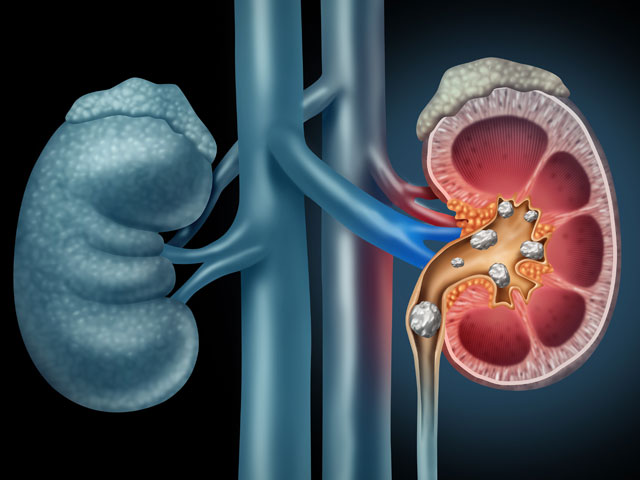
What is a Kidney Stone
What is a Kidney Stone? Facts, Symptoms and Prevention Methods
When some minerals combine to form solid objects in kidney or in the ureter, these are called kidney stones. Although they can be seen at any age, they usually occur from the 30s onwards. If left untreated, kidney stones lead to blockage of the ducts or ureter, which causes an increase in pressure. This pressure causes severe pain and impairment in the function of the organ. Therefore, individuals with kidney stones should immediately see a doctor without waiting for the pain. Once formed, it tends to recur even if it is totally eliminated with treatment.
Who is more prone to kidney stones?
This disease, which is 3 times more common in men than in women, is very related to nutrition habits and lifestyle. While the prevalence is 1%-5% in Asian countries, this rate increases to 7-15% in North America. In Europe, the prevalence is between 6% and 10% of the population. These large differences are mostly due to differences in physical activity levels and dietary habits.
Causes of kidney stones
Although the cause of kidney stone formation is not known exactly, there are some factors that increase the risk of the disease. Individuals with a family history of kidney stone disease are highly likely to suffer it themselves. Improper eating habits and especially staying dehydrated can also increase the risk of kidney stone formation. The other factors are as follows:
- Obesity
- Recurrent urinary tract infections (UTIs)
- Having had kidney stone problems before
- Inadequate physical activity
- Congenital kidney anomalies
- The presence of other diseases in the kidneys
- Chronic bowel problems
- Gout
5 Types of kidney stones
Kidney stones are analyzed in 5 types:
Calcium oxalate stones: Being the most common cause of stone formation in kidneys, calcium oxalate stones indicate low citrate but high calcium levels in the urine.
Calcium phosphate stones: This is the second most common type and it is mostly due to the improper functioning of any part of your urinary system.
Uric acid stones: This type of the disease is generally seen in people whose diets contain too much protein, and especially red meat, chicken, eggs, and shellfish.
Cystine stones: This very rare type of kidney stone is usually caused by metabolic disorders, but still can be treated with medication or life-style changes.
Struvite (infection) stones: Taking its name from magnesium ammonium phosphate mineral Struvite, this type of stone is a one to be careful with as it can grow rapidly. It is caused primarily by urinary tract infections.
How can kidney stones be diagnosed?
Since these stones are almost rock solid, it is very easy to monitor their presence and location with modern day techniques as follows:
- Ultrasonography
- Ureteroscopy
- X-ray
- Computed tomography (CT)
- Urinalysis
Kidney stone treatment
In some cases the stones can be dissolved with the help of medications without surgery. If the stone is small enough, it can be excreted through the urinary tract with plenty of water consumption.
For stones that do not dissolve and are below a certain size, ESWL (Extracorporeal Shock Wave Lithotripsy) can be used. In addition, stone crushing or removal procedures can also be performed by ureteroscopy with the help of Retrograde Intrarenal Surgery, also known as RIRS treatment, through the urinary tract. In some cases, nephrolithotomy operation (closed kidney stone surgery) is preferred, where the stone is removed directly from the kidney. Which of these treatment methods will be preferred should be determined after a detailed examination by the urologist.
Kidney stone prevention methods
Basic precautions are following a balanced diet with plenty of fluids and adding physical exercise to your daily routine before the stone forms. If the stone is already there, then your initial step must be visiting an urologist to identify the type and size of it. The type of stone formed in the individual should be known and foods that increase the risk of stone formation should be excluded from the patient’s diet plan.

